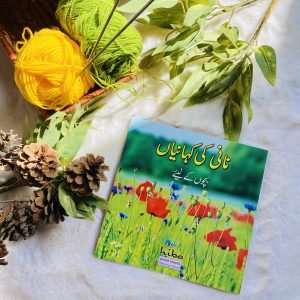By Sadaf Azhar Omar
Khadijah (rtaf) means ‘premature, ahead of her time’. True to her name, Khadijah (rtaf) was a visionary, who realized the true worth of not only her erstwhile husband but also his divine mission. The Prophet (sa) said that Maryam (as) was the best woman of her time, and the best woman of her own time was Khadijah (rtaf), referring to her perfection of Iman and character.
Startling Facts
Khadijah (rtaf) shared the same noble lineage as the Prophet (sa). Her father Khuwailid was the youngest son and the chief of Banu Asad. He was a close friend of the Prophet’s (sa) grandfather Abdul-Muttalib, and together they had defended the Kabah against the army of elephants. Her mother was Fatimah bint Zaida. One of her brothers was Awwam, the father of Zubair bin Awwam (rtam), who even named two of his daughters Khadijah (rtaf). Another brother was Hizam, the father of Hakim bin Hizam. Hala was her sister and her son Al-Aas (rtam) married Zainab (rtaf).
She was fifteen years older than the Prophet (sa). Her name was very unusual in Makkan society and had no known precedent, similar to the name Muhammad.
An extremely beautiful, well dressed, and cultured lady, she was also unusually accomplished because she was literate in a society, where even literate men were few.
She never worshipped idols, probably under the influence of her cousin Waraqah bin Nawfil.
Due to her noble character, she was nicknamed Tahirah, the Pure, even before Islam. She was known never to have backbitten or lied. Despite her beauty, wealth, and status, she was humble and gentle, and no one ever complained of being hurt by her.
She first married Abu Hala bin Zurarah al Tamimi and had 2 sons, Hala and Hind. Hind (rtam) later became Muslim and is known for his famous description of the physical appearance of the Prophet (sa).
After her first husband died, she married Ateeq ibn Hail al Makhzumi and had a daughter named Hind and son named Abdul-Uzza. Ateeq also died, so by the young age of 25, she had already been widowed twice.
She inherited from both her parents and both her husbands – she was an extremely wealthy and astute businesswoman. Her caravans would outdo all of Quraysh caravans – she is reported to once have sent over 800 loaded camels to Syria and Yemen for trade. The extent of her wealth can also be gauged from the fact that she is reputed to have had 400 servants at one time.
Due to her nobility, wealth, and elegance, she was also nicknamed Ameerah tu Quraysh (the Princess of the Quraysh), Syeddati Quraysh (the Noble Lady of the Quraysh), and Khadijah tul Kubra (Khadijah the Great).
Her house was marked by a green silk pavilion that served as an indication to the poor, who relied heavily on her generosity. She would pay the bridal gift money on behalf of the poor for enabling them to get married.
Unfortunately, people would take advantage of her gentleness and humility and try to cheat her in business matters. She was looking for an honest merchant, whom she could entrust her trade, because she herself did not accompany her caravans. Her sister Hala referred the Prophet (sa) for this purpose, because he was a shepherd for some of her sheep and she vouched for his honesty and integrity. Maysara, Khadijah’s (rtaf) devoted slave, accompanied the Prophet (sa) on the trade route – he witnessed, how the clouds and trees shaded him from the hot sun, and he also testified to the Prophet’s (sa) honesty. The Prophet (sa) doubled the trade profit.
Khadijah (rtaf) was not looking for marriage – she had already refused the proposal of Abu Jahl, Abu Sufyan, and Utbah bin Mueet. However, the Prophet’s (sa) honesty, truthfulness, and the fact that he was a monotheist appealed to her. Nafisa, a close friend, recommended her to marry him, and so Tahirah was married to Al-Ameen by Waraqah bin Nawfil. This was the fulfillment of her dream that the sun descended into her home. Waraqah had interpreted this to signify that she would marry a prophet or a nobleman.
At the time of their blessed marriage, she was forty, and the Prophet (sa) was twenty-five years old. Their monogamous marriage was an anomaly in the Makkan society of that time, and it lasted twenty-five years. She bore the Prophet (sa) six children: four daughters and two sons (both died in infancy).
Theirs was a large household, including some of her children from her previous marriage, Ali (rtam) and Zaid ibn Harithah (rtam).
She died only three days after Abu Talib at the age of 65 in Ramadan that had not yet been declared the month of fasting. The Prophet (sa) buried her himself – no Ghusl or Janazah commands had yet been revealed. She was buried in Jannat-al-Mualla, close to the grave of Abu Talib.
Ammar ibn Yaasir said they feared for the Prophet (sa) after she died, because of the intensity of his grief – he could be heard weeping loudly and consoling Fatima. The companions left him alone for fear of upsetting him further.
After the conquest of Makkah, he pitched a tent next to her grave, instead of returning to his house.
Points to Ponder
She named the daughters and the Prophet (sa) named the sons. This reflects that the Prophet (sa) valued her opinions.
They only argued once during their marriage, when she wanted the Prophet (sa) to attend a gathering of her relatives, and he refused on the grounds that they would worship idols. Notice that even this single argument was based on the consciousness of Allah (swt), even though Islam had not yet been revealed.
She loved to make him happy, so when she saw how much he loved his foster mother Haleema, Khadijah (rtaf) gifted her forty sheep and a camel. This habit of gifting extended to everyone who had helped him when he was young or destitute. As a token of his appreciation for her thoughtfulness, the Prophet (sa) always gave gifts to her family and friends, after she passed away.
Six months prior to the first revelation, the Prophet (SA) sought solitude in the cave of Hira, sometimes weeks at a stretch. This was a difficult time for Khadijah (rtaf) because women insinuated that they had had an argument that had driven him to seclusion. However, she supported him by making the difficult climb to Cave Hira herself with food and other necessities for his comfort. Remember, she was almost fifty-five years old by this time, but she bore the physical hardship and social pressures with dignity and patience, trusting him completely.
When Jibreel (as) came with the first revelation, and when the Prophet (sa) saw him in full angelic form the first time, he literally ran from the Cave Hira straight to his wife for comfort and validation.
Though the Prophet (sa) was disturbed and doubted himself, she firmly reiterated her complete faith in his integrity and sanity. She termed his encounter as ‘good news’, because Allah (swt) would never disgrace a person like him, who maintained good relations with his kin, was always truthful, helped the poor and destitute, honoured his guests and assisted those struck by calamity. Many years later in Madinah, Allah (swt) revealed these signs of piety in Surah Baqarah, hence, validating her understanding of the manifestations of God-consciousness.
Her confidence in him stemmed from the fact that as his wife, she knew him best – a practical lesson to all Muslims of the Hadeeth that the best among us are those, who deal the best with their family.
She confirmed his truthfulness even before he had understood what had happened to him. She was the one who recommended consulting the scholar Waraqah bin Nawfil. When Waraqah predicted that the Prophet (sa) would be persecuted by his own people, she made his words her life’s purpose, understanding that this mission was worth any sacrifice in this world.
Another incident that demonstrates her wisdom and understanding of inherent virtuousness occurred when the Prophet (sa) saw Jibreel (as) in human form. In order to determine if this was an angel, she held the Prophet (sa) close and took off her head covering, for an angel would not intrude in the privacy of a husband and wife out of modesty.
Surah Muddaththir was revealed while he was in the arms of Khadijah (rtaf). He instantly obeyed Allah (swt) and invited her to accept Islam. She responded with alacrity, becoming the first Muslim after him.
The Prophet (sa) made his first Wudu and prayer with her. Likewise, he performed the first Tawaf after Islam with her, and he would spend his night prayers with her.
When Banu Hashim and Banu Muttalib were boycotted by the Quraysh, Khadijah (rtaf) could have chosen to stay out of the ghetto that was created, since she belonged to neither clan. However, she chose to be with him and used all her connections, particularly her nephew, to sneak in food for the Muslims. She herself ate grass to survive; she was now sixty years old, but she never once complained. In fact, once Jibreel (as) met her in the form of a man and asked how she was doing, and she only praised her husband.
Most Ahadeeth about Khadijah (rtaf) are narrated by Aisha (rtaf), who was deeply jealous of her, because even thirteen years after her death, not a day passed without the Prophet (sa) mentioning her, and because Allah (swt) had given her the glad tidings of Jannah.
Once, in a fit of resentment, Ayesha (rtaf) called her ‘the toothless woman of Quraish’. She realized, however, that she had deeply offended the Prophet (sa), when she saw his face change out of intense anger. He did not belittle her but stood up and swore that Allah (swt) did not replace Khadijah (rtaf) with anyone better, for she believed in him, when everyone disbelieved, considered him truthful, when others called him a liar, she spent her money on him, when others held back, and Allah (swt) gave him children through her and not through other women.
Every time he slaughtered a sheep, he would send some to her family and friends. Hala’s voice reminded him of Khadijah (rtaf), and he would spend a long time reminiscing about her. An old woman once visited him, and he honored her and gave her gifts, just because she would visit during Khadijah’s (rtaf) time as well.
Husbands often do not notice what their wives wear or treasure. The Prophet (sa) loved her so deeply that he even remembered that she had gifted Zainab (rtaf) her own necklace.
Jibreel (as) is reported to have brought greetings from Allah (sa) and himself for Khadijah (rtaf). In the same incident, he also gave her the glad tidings of a palace made of pearls for her in Jannah, wherein she would suffer neither fatigue nor noise. She had sold her pearls to help the Muslims and had suffered verbal abuse by the disbelievers. This Hadeeth was a sign that she was about to die, and that Allah (swt) was pleased with her. When the Prophet (SA) conveyed this message to her, she responded beautifully by identifying Allah (swt) as the source of all peace Himself (thereby acknowledging His attributes and powers and the fact that a mere human could not ‘return’ greetings to Allah (swt)). She not only returned Jibreel’s (as) greetings but also included the Prophet (sa) in them, for he was the one to convey this good news to her.
She did not see Islam flourish and establish in rituals, but she set the foundations of Islam through her sacrifice. She exemplifies how Allah (swt) recommends us to obey and love the Prophet (sa). The Prophet (sa) termed her love as a Rizq from Allah (swt), a divine blessing.



